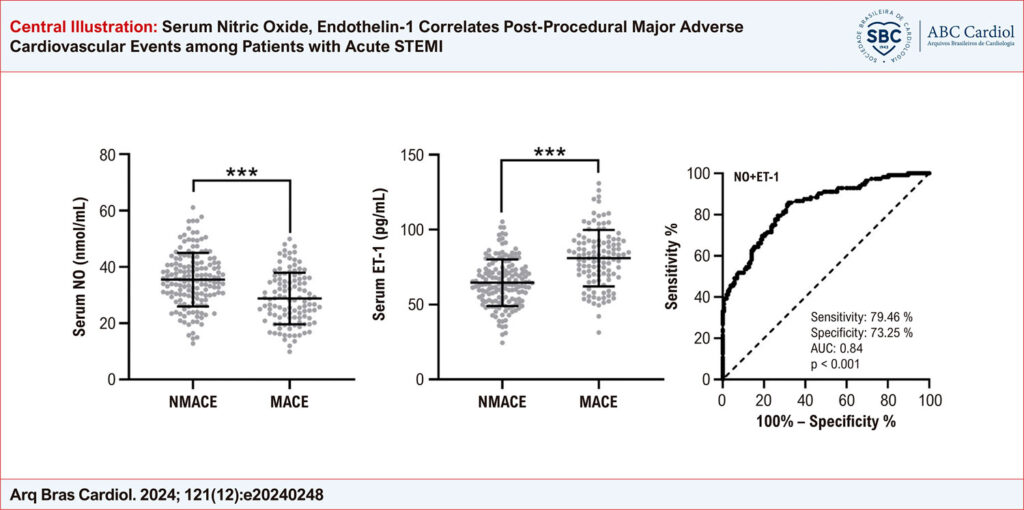Arq. Bras. Cardiol. 2025; 122(1): e20240248
Serum Nitric Oxide, Endothelin-1 Correlates Post-Procedural Major Adverse Cardiovascular Events among Patients with Acute STEMI
Abstract
Background
ST-segment elevation myocardial infarction (STEMI) is a common and severe form of acute myocardial infarction (AMI).
Objectives
The study aimed to investigate the relationship between serum nitric oxide (NO) and endothelin-1 (ET-1) levels with the severity of STEMI and their predictive value for major adverse cardiovascular events (MACE) within one year after percutaneous coronary intervention (PCI) in STEMI patients.
Methods
The retrospective study was conducted on 269 STEMI patients who underwent PCI. The patients were categorized into two groups: those who developed MACE (112 cases) and those who did not (157 cases) within one year. NO and ET1 levels were measured in collected serum using enzyme-linked immunosorbent assay. Receive-operating characteristics (ROC) curve was used to analyze the prognostic potential of NO and ET1 individually and in combination, p<0.05 was considered statistically significant.
Results
Significant differences were noted between the two groups concerning age, Killip classification, left ventricular ejection fraction, cardiac troponin I (cTnI), creatine kinase-MB (CK-MB), as well as serum NO and ET-1 levels. The study observed that patients who developed MACE had lower serum NO and higher ET-1 levels upon admission. Further analysis revealed a significant inverse relationship between serum NO and ET-1 levels and the severity of myocardial infarction. A combined detection model, -0.082 * NO + 0.059 * ET-1, demonstrated promising prognostic value for the occurrence of MACE within one year post-PCI.
Conclusions
Serum NO and ET-1 levels serve as valuable prognostic markers for MACE in STEMI patients undergoing PCI, exhibiting a strong correlation with AMI severity.
541

